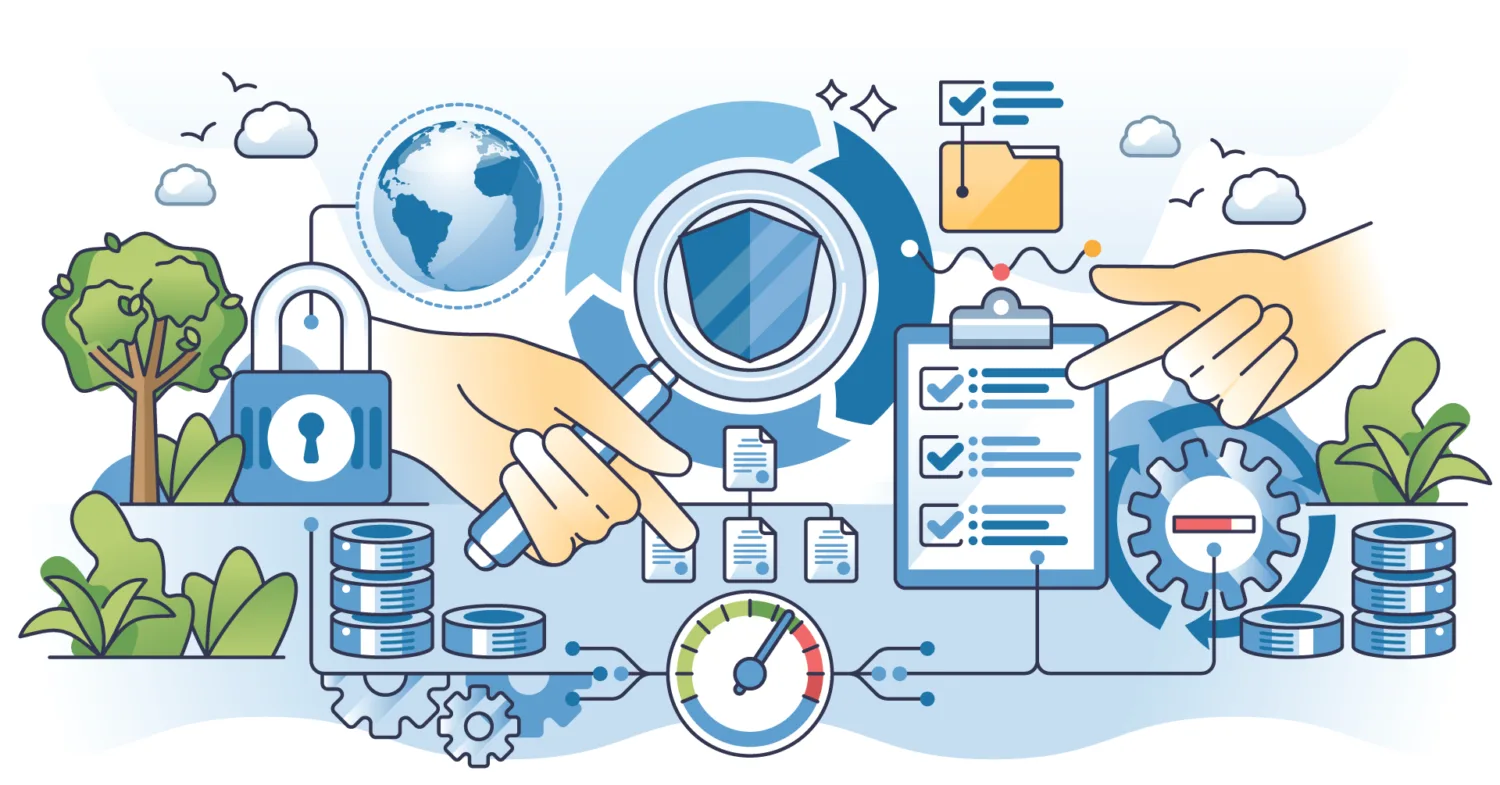Achieving Proactive Security across the Vulnerability Management Lifecycle

The importance of security to every organization has never been clearer. The numbers paint a stark picture: according to a Data Breach Report, there were a staggering 2,365 cyberattacks in the past year alone, impacting a combined total of over 343 million victims. These statistics highlight the relentless pursuit by cybercriminals to exploit vulnerabilities within IT systems.
Relying solely on reactive security measures, waiting for an attack to happen before taking action, isn’t enough. Instead, organizations need to embrace a proactive approach, one that anticipates and addresses potential security weaknesses before they can be weaponized by attackers. This proactive approach hinges on a crucial framework known as the Vulnerability Management Lifecycle.
What is the Vulnerability Management Lifecycle?
The Vulnerability Management Lifecycle is a continuous process aimed at identifying, assessing, prioritizing, and mitigating vulnerabilities within an organization’s IT environment. It is a crucial part of a robust cybersecurity strategy, ensuring that potential weaknesses in systems, networks, and applications are discovered, prioritized, and remediated before they can be exploited by malicious actors.
Think of the Vulnerability Management Lifecycle as a systematic, ongoing process for managing and reducing risk. By implementing this framework, you are taking control of your security posture, proactively identifying and mitigating threats before they become a full-blown crisis.
Benefits of having a Vulnerability Management program
The advantages of a well-defined Vulnerability Management program are numerous. Here are a few of them:
Proactive Vulnerability Discovery and Resolution
Regularly scanning and identifying vulnerabilities allows organizations to address issues before they can be exploited. It helps stay ahead of potential threats that impact the business.
Optimized Resource Allocation
Thousands of vulnerabilities are discovered daily, and not all of them need to be fixed right away. With the right tooling, a Vulnerability Management program equips you to distinguish critical threats from lower-risk ones. This prioritization allows you to allocate your resources strategically, ensuring your teams focus on the vulnerabilities that pose the greatest risk to your organization.
A More Consistent Vulnerability Management Process
The Vulnerability Management Lifecycle provides a framework for managing vulnerabilities, ensuring a consistent and repeatable approach across your organization. This consistency leads to improved efficiency and reduces the risk of missed vulnerabilities, thus enhancing overall security measures.
Enhanced Regulatory Compliance
A well-defined Vulnerability Management program demonstrates your commitment to data security and helps you adhere to industry regulations and data privacy laws.
Improved Operational Efficiency & Informed Decision-Making
Automating tasks like vulnerability scanning and prioritization frees up IT resources for other critical tasks. Additionally, this framework provides valuable data and insights that can be used to make informed decisions about security investments and resource allocation.
Increased Security Awareness & Collaborative Defense
Regularly discussing vulnerabilities and remediation strategies fosters a culture of security awareness within your organization. This collaborative approach empowers employees to play a vital role in maintaining a strong security posture.
Stages of the Vulnerability Management Lifecycle
Unlike a linear process with a defined start and end, the Vulnerability Management Lifecycle is a continuous loop. This reflects the ever-evolving threat landscape where new vulnerabilities can emerge within your network at any time. The sheer volume of vulnerabilities that organizations inevitably track across the Vulnerability Management Lifecycle demonstrates why it is so important to take a risk-based approach to managing vulnerabilities.
The Vulnerability Management Lifecycle ensures a systematic and efficient method of handling these vulnerabilities, with each stage feeding directly into the next to create a never-ending cycle of proactive security.
Let’s delve into the key stages within a single iteration:
Stage 1: Identification and Inventory
The first step is to discover and document all your IT assets, from hardware and software applications to cloud-based systems. Once identified, each asset needs to be classified based on its criticality and the data it stores. This helps prioritize vulnerabilities later on.
For example, a server storing sensitive customer data will be classified as more critical than a printer. Having a complete picture of your network is essential for identifying potential vulnerabilities.
Stage 2: Discovery, Prioritization and Risk Assessment
Now that you know your assets, it’s time to scan them for vulnerabilities. Vulnerability scanners leverage databases of known vulnerabilities to identify potential weaknesses in your systems. This often ends up with a lengthy list of vulnerabilities, so prioritization is crucial. Not all vulnerabilities are created equal.
This stage involves evaluating each identified vulnerability based on its severity, the ease with which it can be exploited, and the potential impact it could have on your business operations. By prioritizing vulnerabilities based on these factors, you can focus your resources on the most critical threats first.
Stage 3: Remediation and Mitigation
Once you have identified and prioritized your vulnerabilities, it’s time to take action. In this phase, organizations take steps to address the identified vulnerabilities. This may involve applying patches, reconfiguring systems, or implementing additional security controls. Timely remediation is crucial to minimize the window of opportunity for attackers.
In situations where immediate remediation isn’t possible, mitigation strategies can be implemented to reduce the risk of exploitation. This might involve segmenting vulnerable systems, restricting access, or implementing additional security controls while a permanent fix is sought.
While it may seem ideal to patch all vulnerabilities, some may be low-impact or require complex and expensive remediation that outweighs the potential risk. In these cases, organizations can document the vulnerability and accept the risk associated with it.
Stage 4: Validation and Verification
Patching a vulnerability doesn’t necessarily mean it’s fixed. This stage involves thorough testing of the applied patches to ensure they have effectively addressed the vulnerabilities. Additionally, the security team rescans and retests changed assets to verify that the vulnerabilities are no longer exploitable and haven’t introduced any unintended side effects.
Stage 5: Reporting and Continuous Improvement
A Vulnerability Management program thrives on a foundation of meticulous documentation. Throughout the process, record all activities, findings, and remediation efforts. This detailed record serves two key purposes: it creates a historical reference for future analysis and simplifies compliance audits.
Furthermore, generating regular reports is crucial for effective communication and decision-making. These reports should summarize identified vulnerabilities, their severity, mitigation strategies, and your overall security posture. This transparency empowers stakeholders to grasp the current threat landscape and assess the effectiveness of your security program.
This is an iterative cycle that thrives on continuous improvement. Regularly analyze data collected throughout the process to pinpoint areas for enhancement. This analysis might lead to refining vulnerability scanning techniques, updating prioritization criteria for identified threats, or investing in new security tools and platforms to further strengthen your defenses.
Empowering Proactive Security with ArmorCode
The ever-changing threat landscape demands a proactive approach to vulnerability management. By implementing a Vulnerability Management Lifecycle approach, organizations can significantly reduce their security risks.
ArmorCode’s AI-powered ASPM platform simplifies and streamlines key stages of the Vulnerability Management Lifecycle. Through its Risk-Based Vulnerability Management (RBVM) capabilities, ArmorCode specifically focuses on asset discovery, prioritization, remediation, and insightful reporting. It empowers organizations to take a proactive approach to security, saving time and resources, and ultimately protecting your valuable data from cyberattacks.
Ready to take control of your vulnerabilities? Request a demo to learn more about the ArmorCode Platform.


